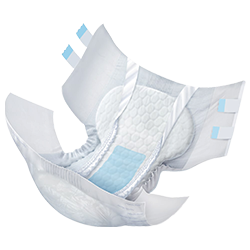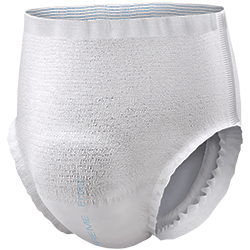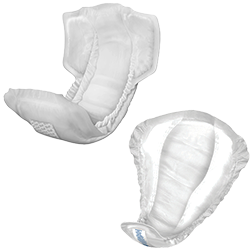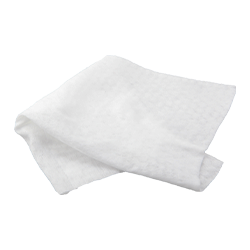Leak Prevention: Your Pants Will Thank You

The interesting thing about writing, for me, is that it requires you to organize your thoughts. What you know intuitively you must now figure out a way to explain to others. It occurred to me the other day that preventing leaks is about three things:
-
-
Fit
-
Available capacity
-
Contingency containment
-
No matter if we’re talking about a diaper or absorbent underwear (and, to a lesser extent, pads and liners), getting the right fit matters most around the legs and the waist. We’re not talking about a watertight seal here, just snug enough that wetness is channeled where it belongs.
The thing few people recognize is the importance of fit over time. It’s pretty easy to get a good fit when you first put on your protection, but how’s the fit two hours later? If it has drooped, you now have gaps that will let wetness escape. Similarly, if the protection swells as it gets full, and is now significantly thicker, has that created gaps at the legs?
Three things will help you with these issues:
1. Get the right fit
Experiment and get samples of more than one size. Adult diapers and underwear are sized by the waist or hips, but that’s not going to do you a lot of good if your legs are thicker or thinner than the model they used when they designed the garment. Everybody is different, so experimentation is key.
2. Support
Disposable incontinence supplies have gotten drastically better over time (trust me; I’ve been doing this for a while) but they’re still made to be used once and thrown away. Haute couture this isn’t. A bodysuit can help a LOT, but if that seems a bit too drastic, some protective underwear that fits snugly and contains a good bit of Spandex or elastane can help tab-style briefs or absorbent underwear (liners and pads too) stay where they belong.
3. Frequent changes
If the high-capacity garment you’re wearing gets heavy, sags and/or creates gaps, consider stepping down to a less capacious one that doesn’t hold as much and needs to be changed more often. Yes, I know, it’s a pain, but probably not as much as a leak would be.
The first dribbles into any absorbent product are the least likely to produce a leak. That’s because the absorbent material is dry and ready to absorb. Every dribble, squirt or gush after that is more likely to produce a leak.
One thing that mitigates that is the ability of the garment to wick the moisture away from ground zero throughout the rest of the absorbent material. Some do this better than others. I’ve used many products with very high capacity ratings that fail well before reaching their promised capacity because the wetness never goes anywhere. The rated capacity was produced in a lab, and the water was poured evenly throughout the garment. Unfortunately, my urethra doesn’t have that feature. It stays pretty much in one spot. How about yours?
Here again, the best thing you can do is experiment. Read reviews, get samples (NorthShore.com has a great 'try before you buy' program) and see what works for you. Research is great, but there is no replacement for seeing what actually works for you.
Let’s call this the Backup Parachute method. If your diaper, absorbent underwear, pad or liner does leak, where will the leak go? If you planned ahead, not far.
There are at least two ways to stop a leak before it gets to your pants, furniture or bed (I do love lists, don’t I?):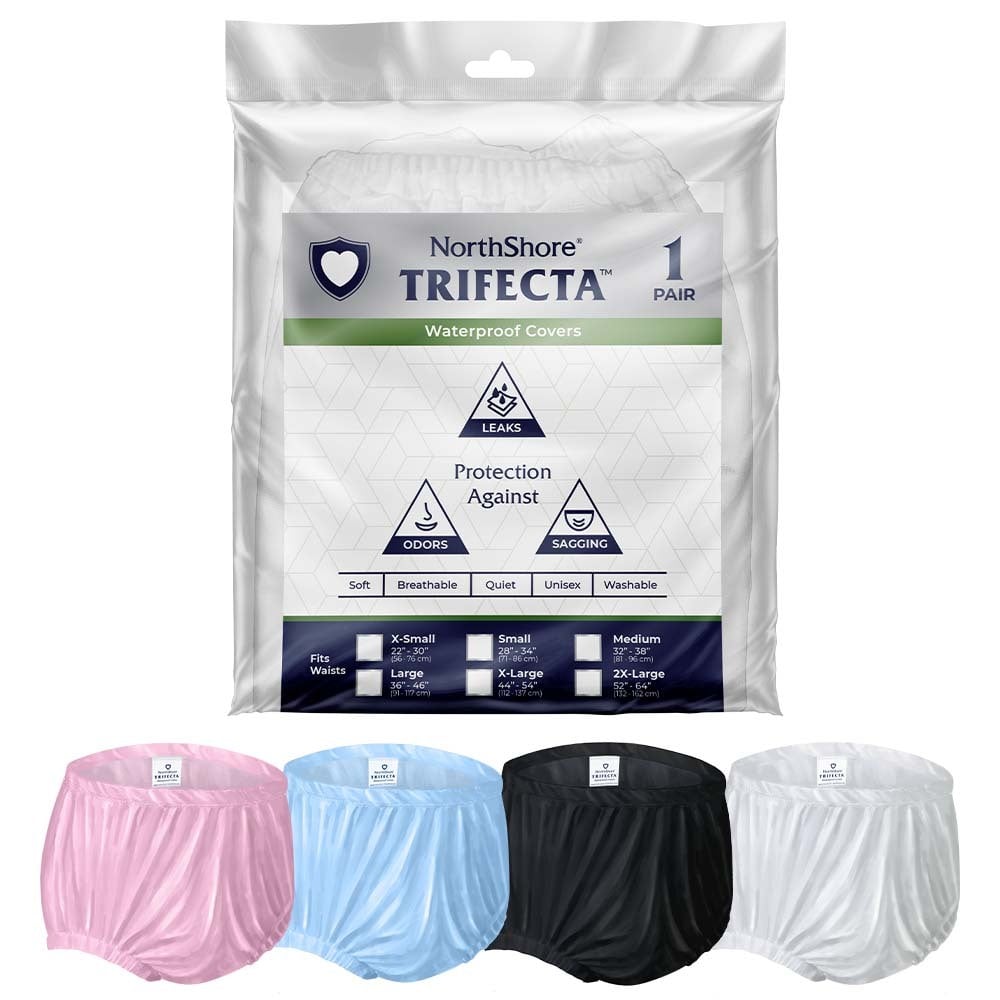
These can help contain any little leaks that happen, and keep pants, furniture or beds dry. Again, I strongly recommend using these in conjunction with something absorbent. The underwear I mentioned above would be good, but even just a folded paper towel can absorb the leak before it rolls around and finds an opening.
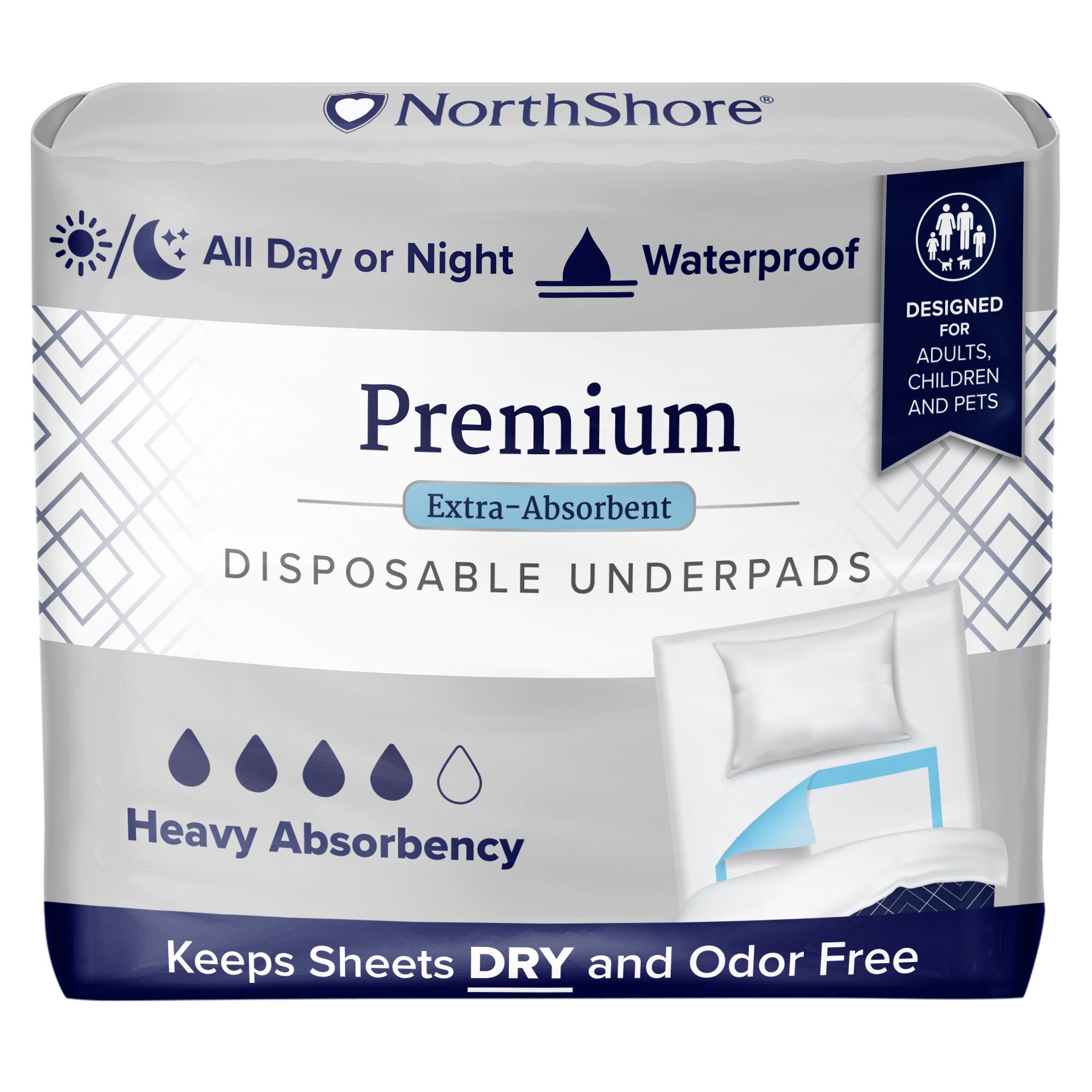
These are your last line of defense. They’re not pretty, they’re not sexy and I understand that they’re not something you want on your furniture when guests come over, but they are incredibly effective.
Okay, so we’ve talked about how to keep leaks from happening. And if they do happen, how to keep them from getting to your pants. And if they do get to your pants, how to keep them from getting to furniture. You are now equipped with the three lines of defense in the war on leaks. You’ve got this.
For more information about absorbent products mentioned in this article, visit the Incontinence Products Page or call (800) 563-0161 for information, specifications, recommendations and more.
Some years ago (I decline to say how many), life threw me a curveball and I found myself facing some new and frightening challenges, and having to navigate the confusing world of incontinence products alone. This was pre-internet and, frankly, pre-decent options. Through constant experimentation, I’ve found products that work for me—yes, many of which are sold by NorthShore Care—but the more important part of my journey has been internal. I’ve fought insecurity, isolation, paranoia that EVERYONE was staring at my butt, and fear that I’d never be able to return to the rich, full life I once had. I’m happy to say all of that was unfounded.
Part of the work I did to understand and accept myself included reading. A LOT of reading. I found articles that explained the different kinds of incontinence, blog posts about the various products that were available, and even pamphlets for drugs that offered to solve my problem. What I couldn’t find was practical guidance on and honest thoughts about living with this embarrassing, confusing, and occasionally hilarious new “feature” my body had to offer.
NorthShore gets it, and that’s why I’m here. NorthShore isn’t just a business that sells incontinence supplies, it’s a business built on a foundation of understanding of what you and I are dealing with every day.
I don’t work for NorthShore (would it be too cheesy to say I work for you?) but this feels like the right place for a blog that addresses real-world issues around incontinence. Here I’ll talk candidly, openly, and occasionally uncomfortably about the challenges we face, the products that can help us manage those challenges, and how to go about confidently getting on with our lives.
Let’s get real.
—Bill Edwards![]()
